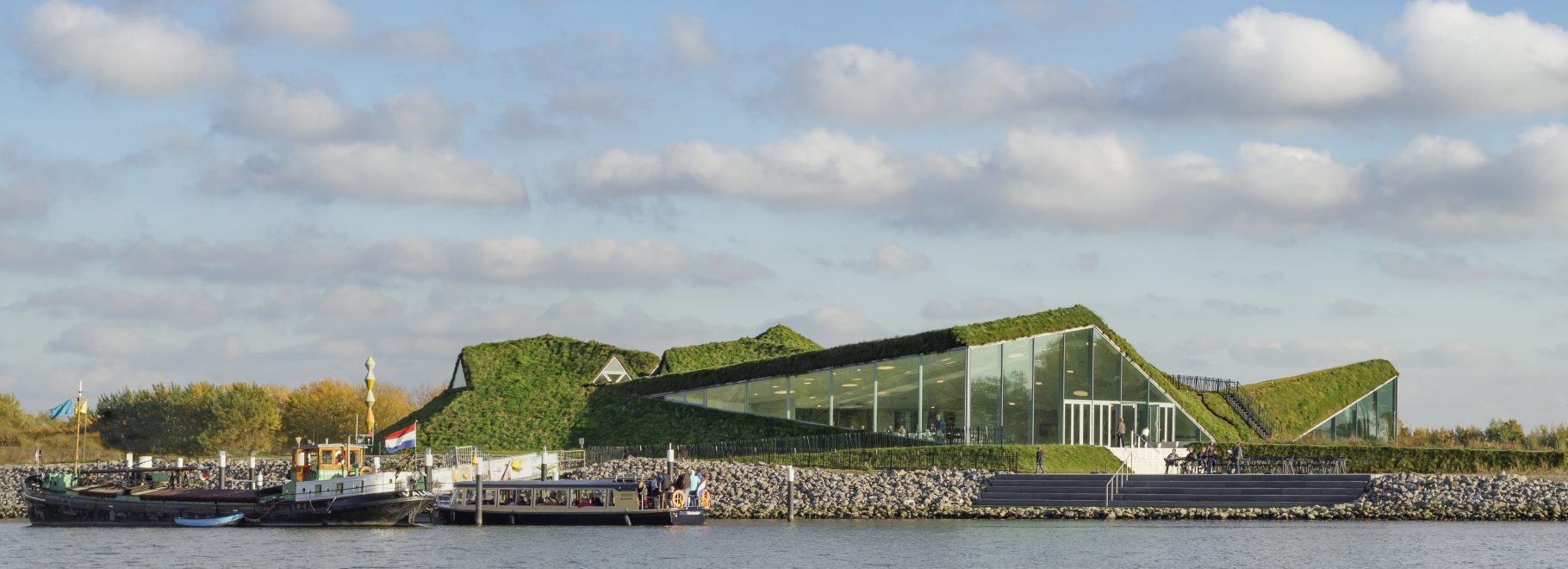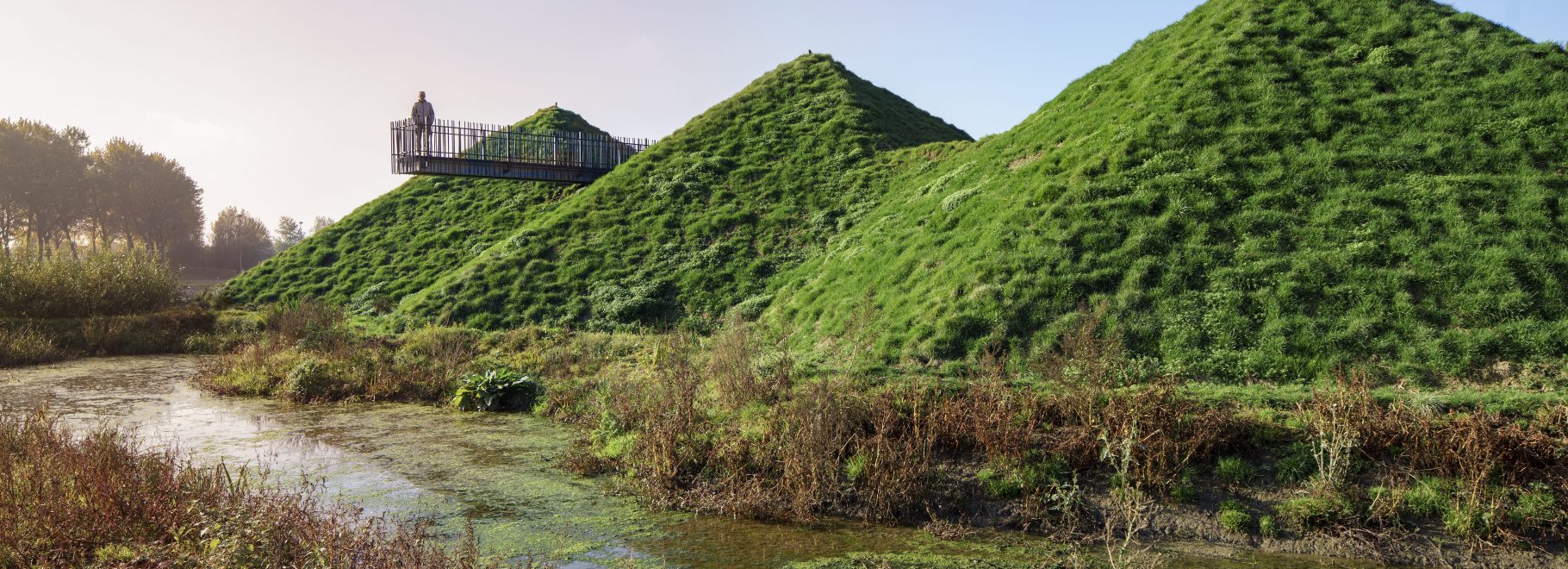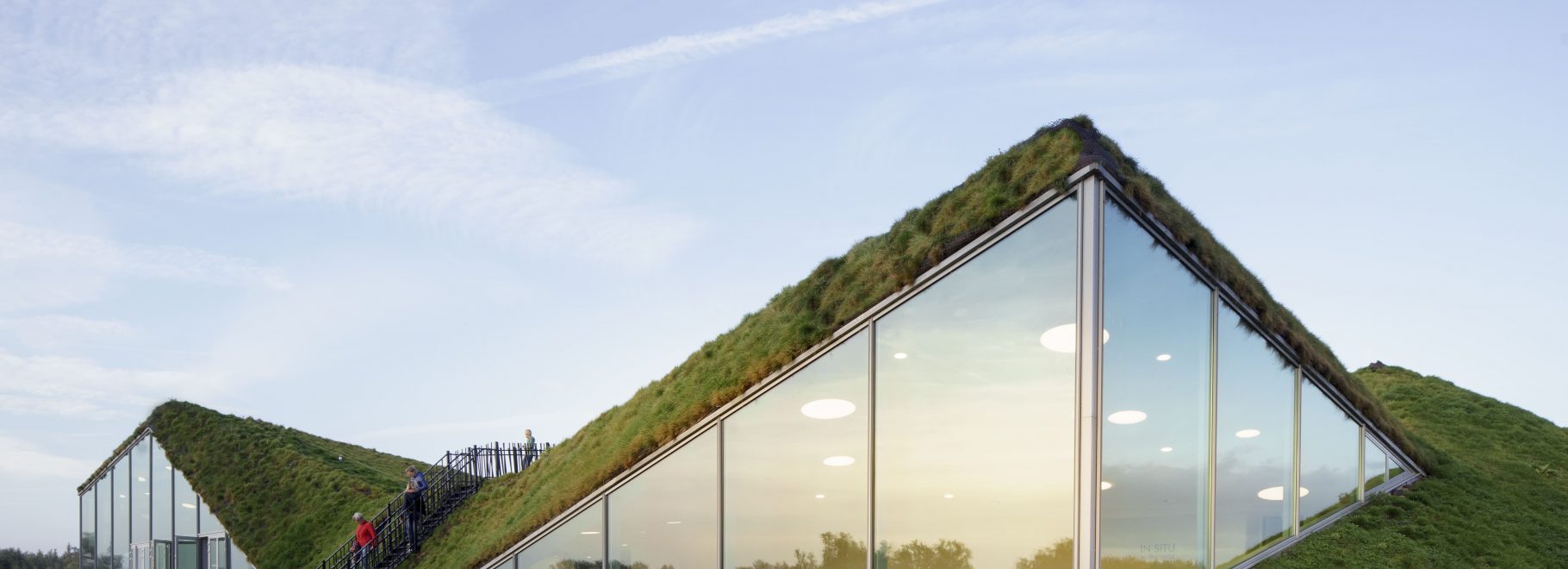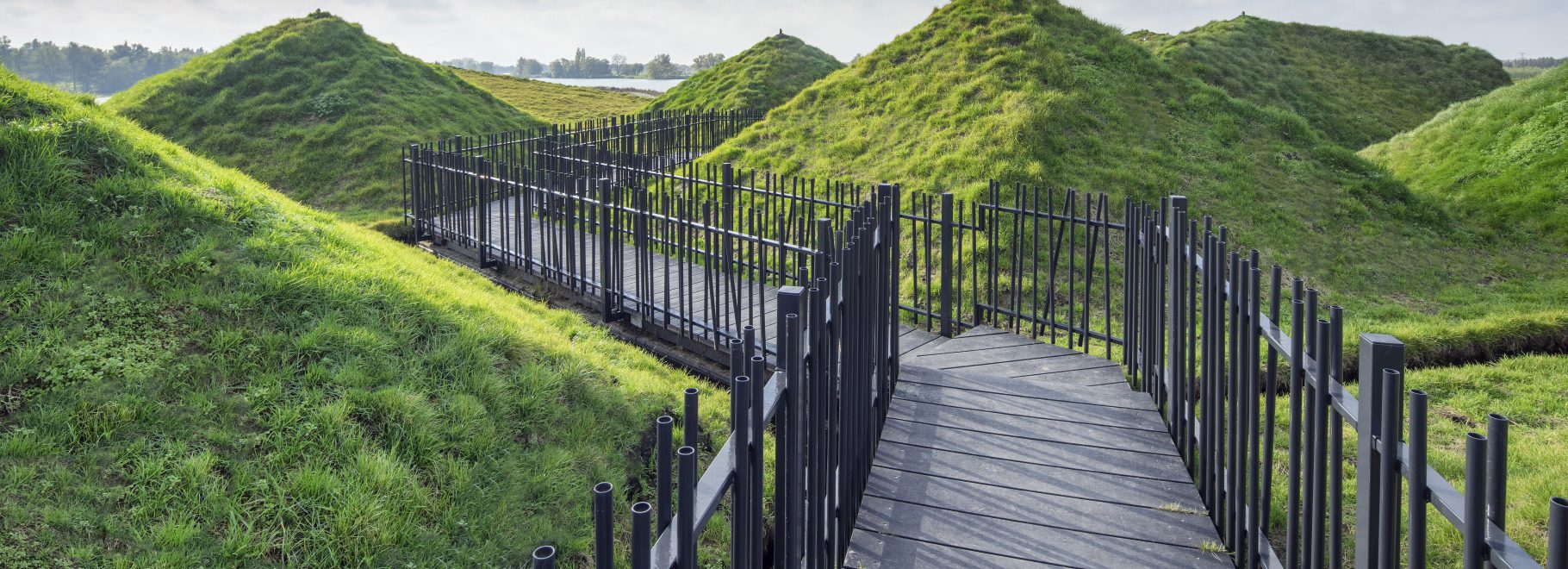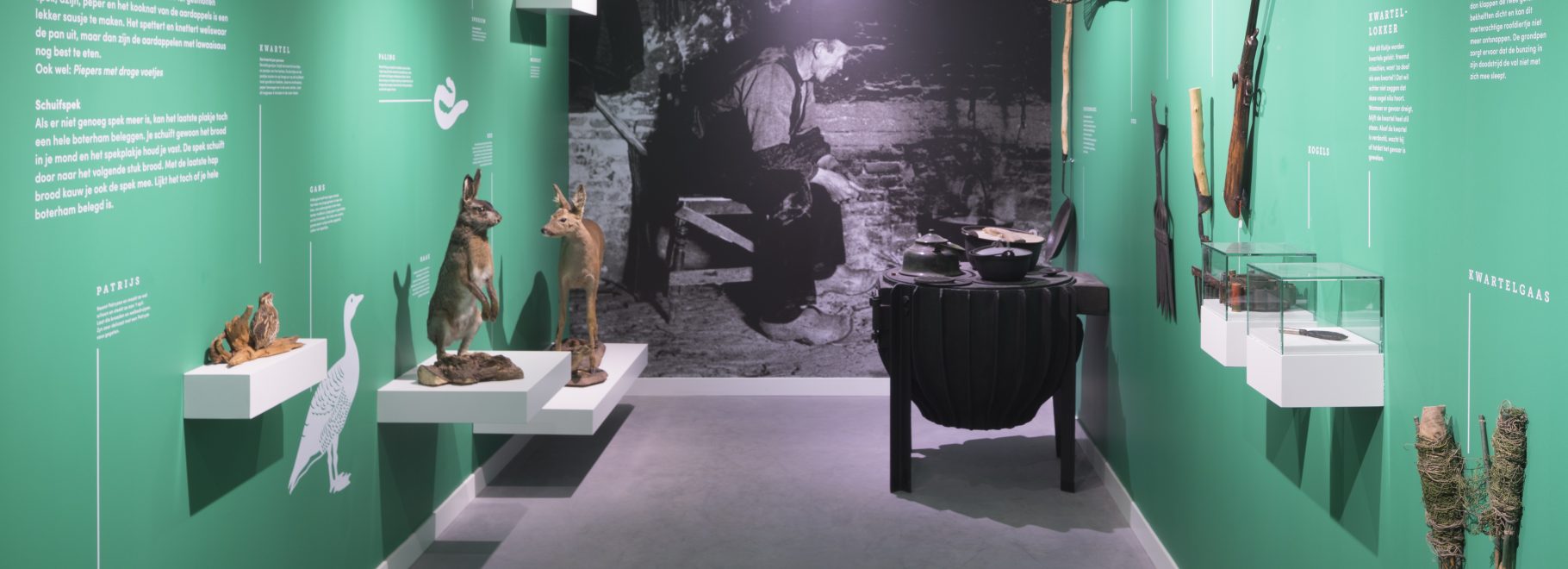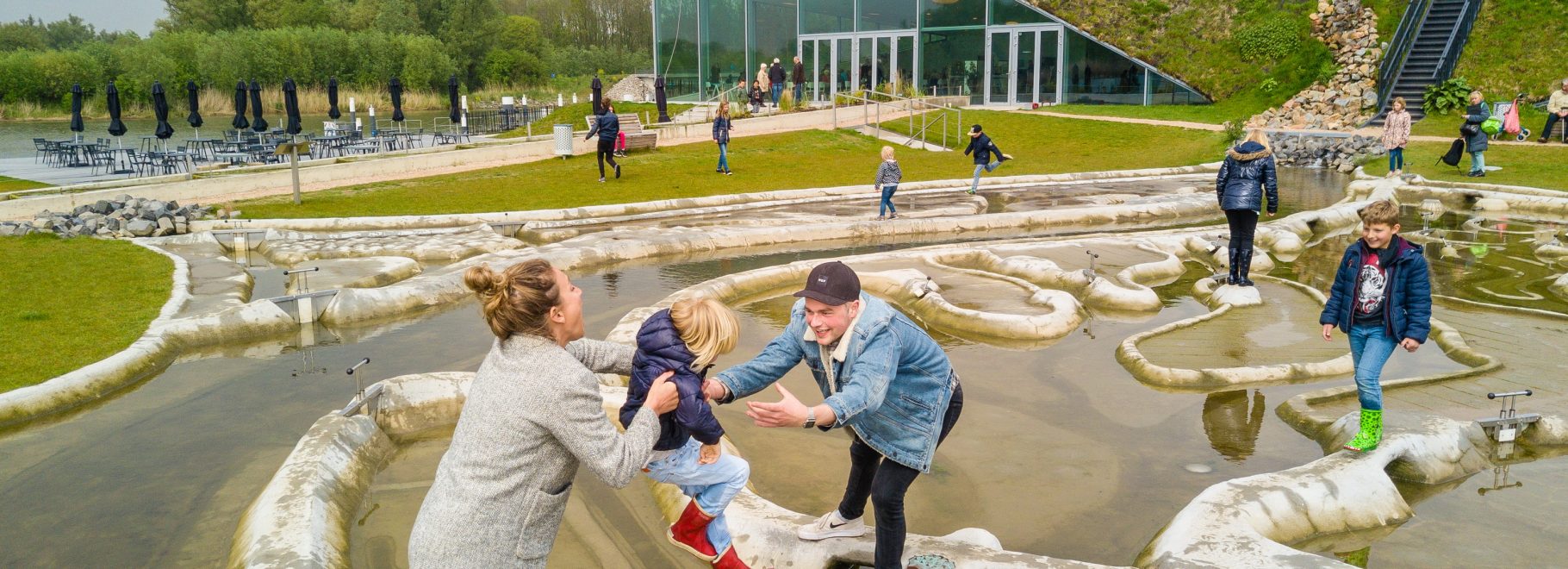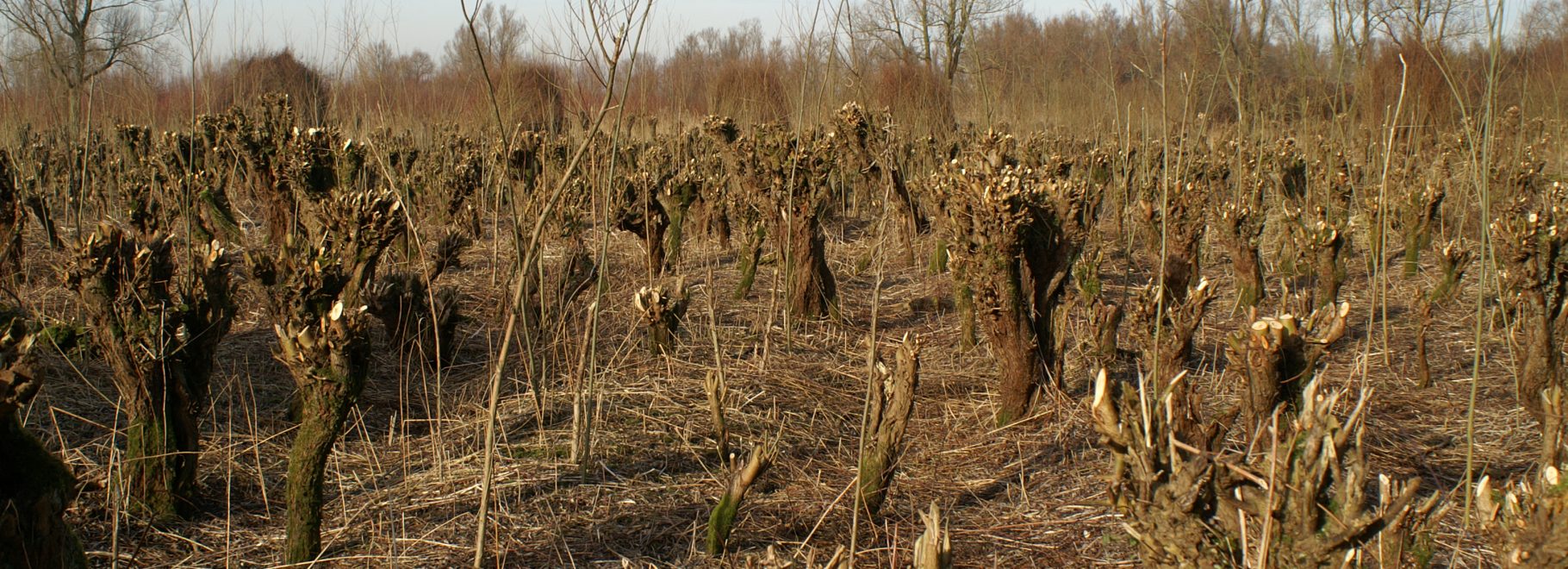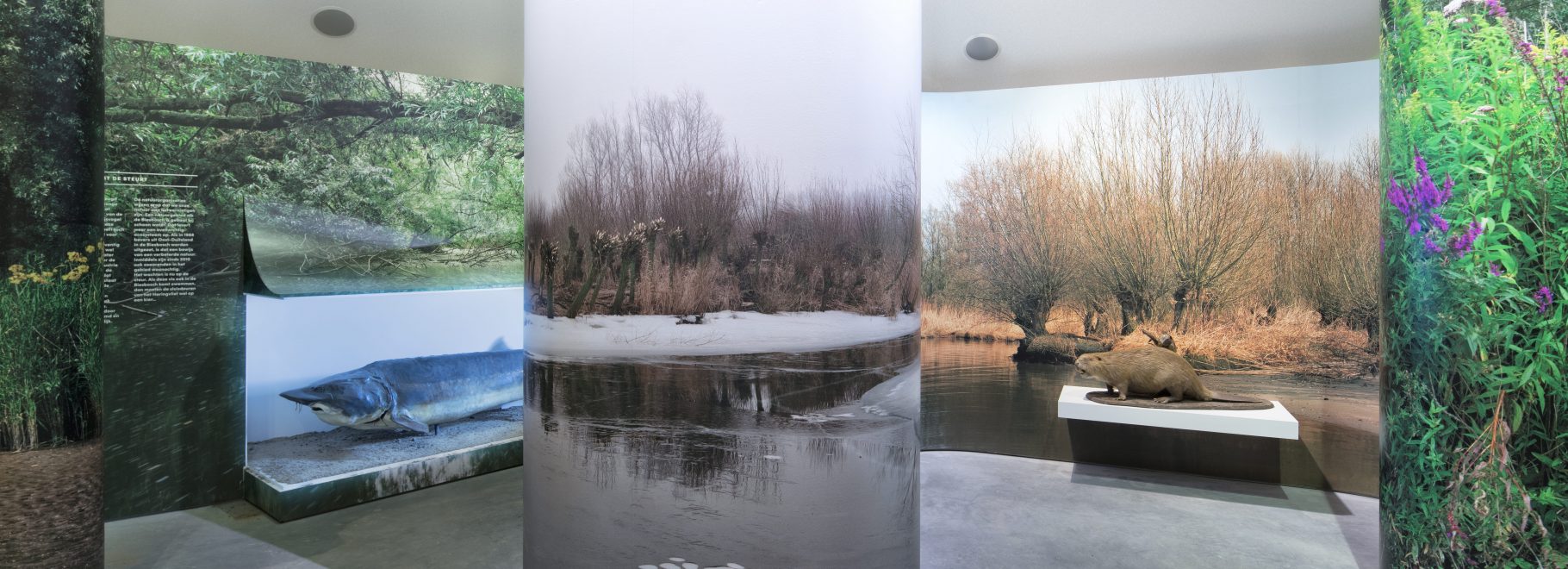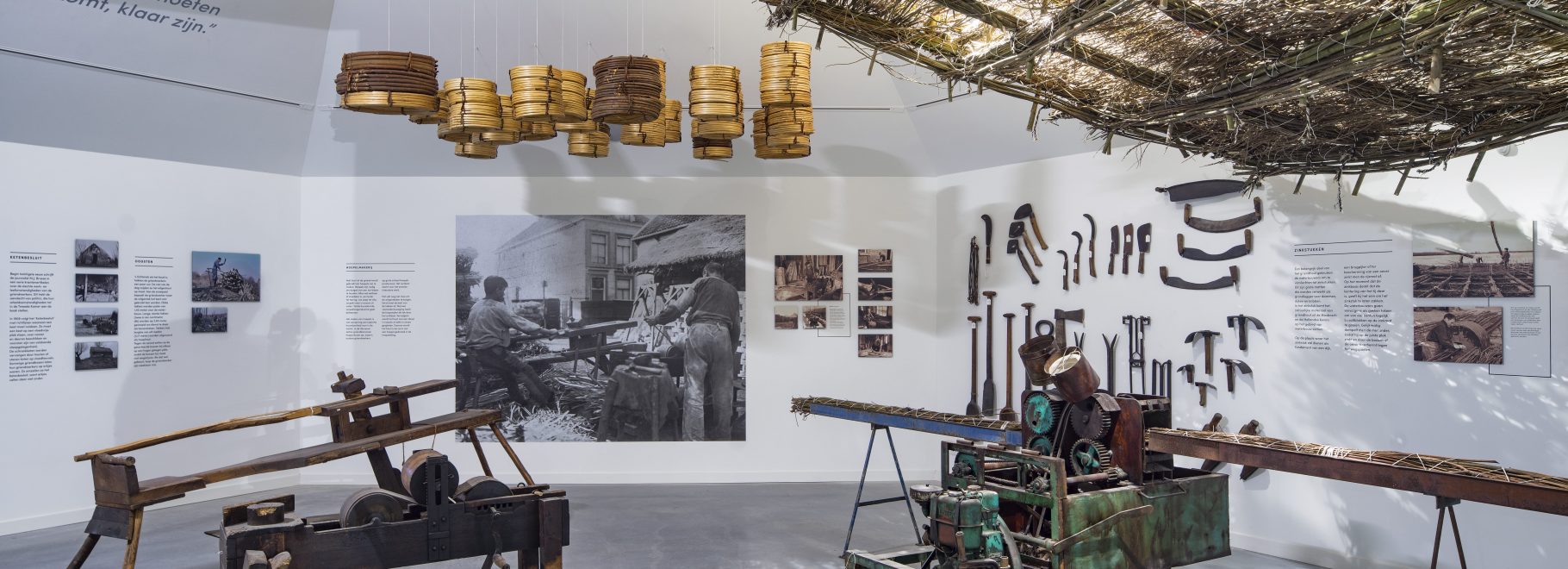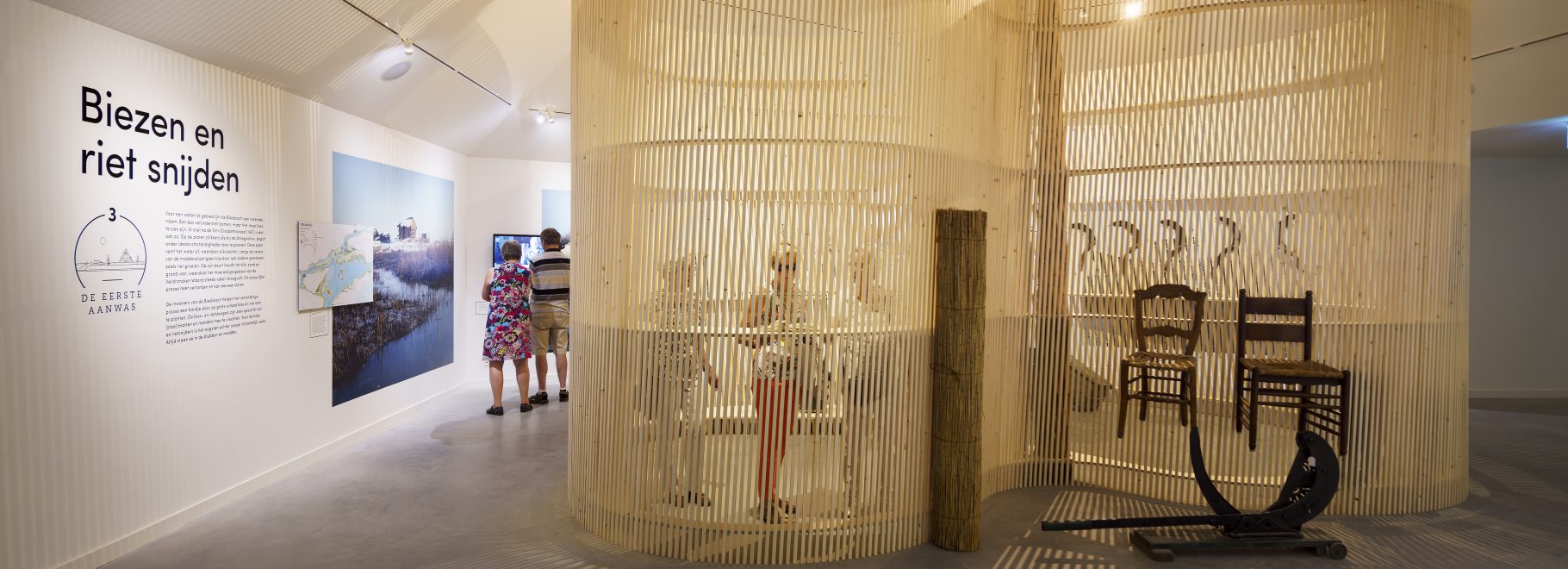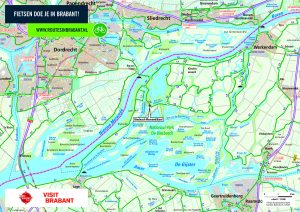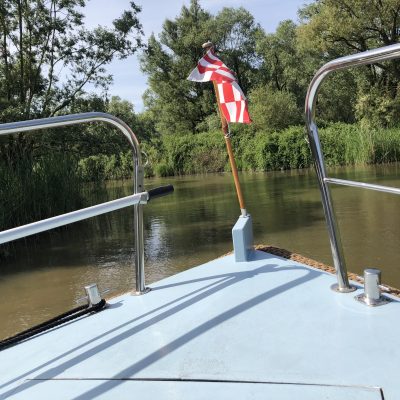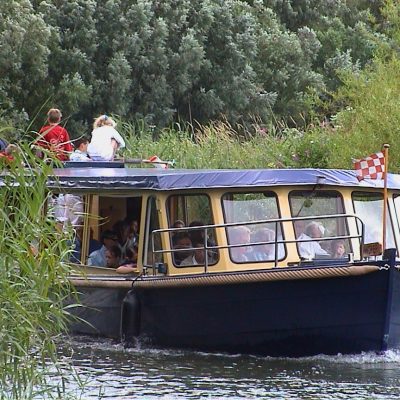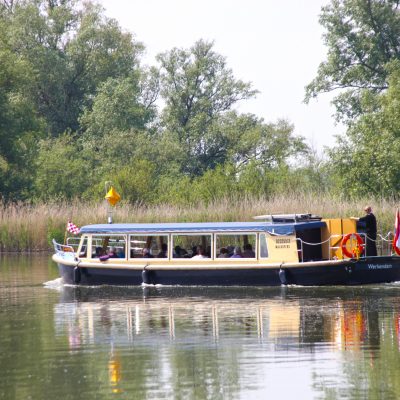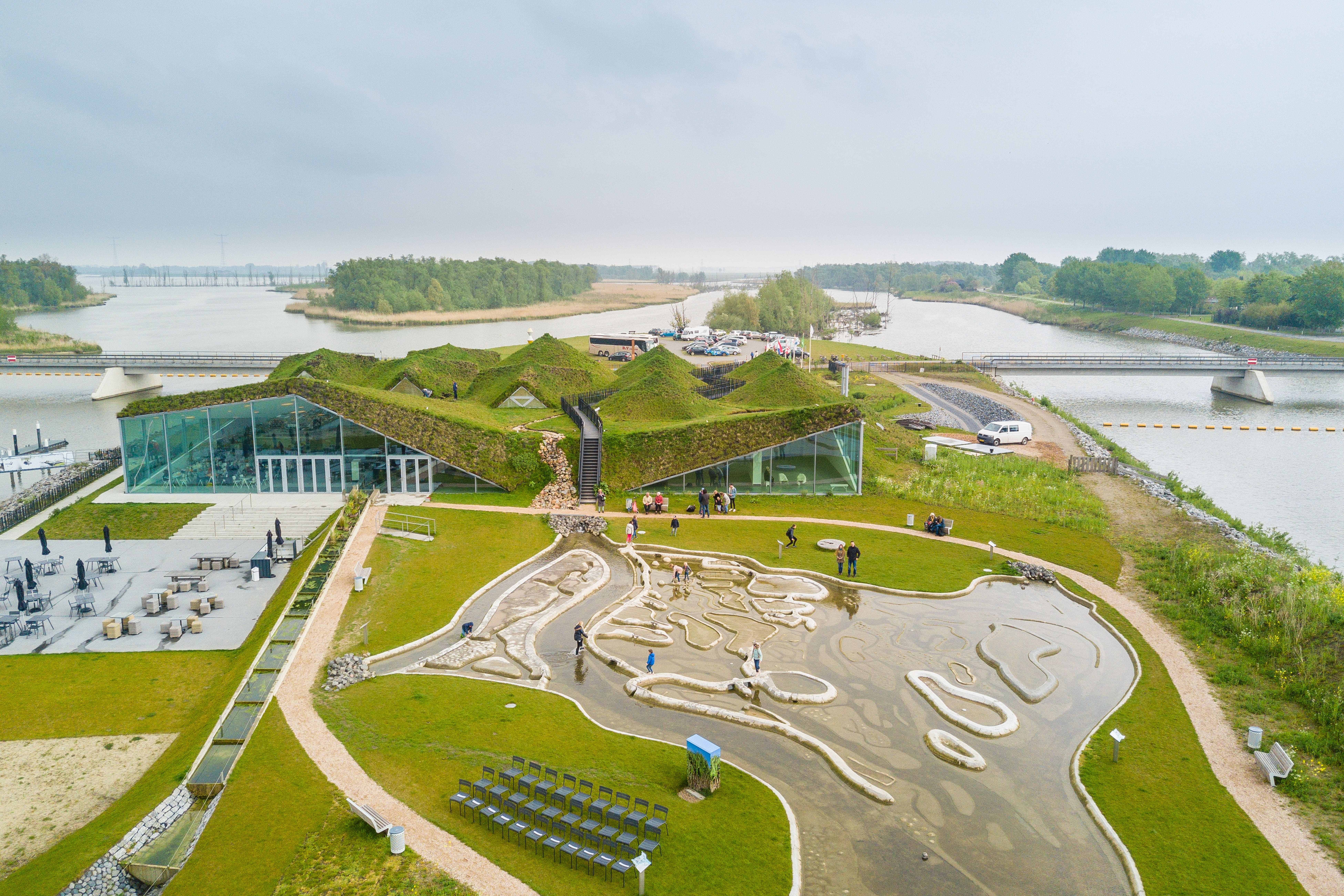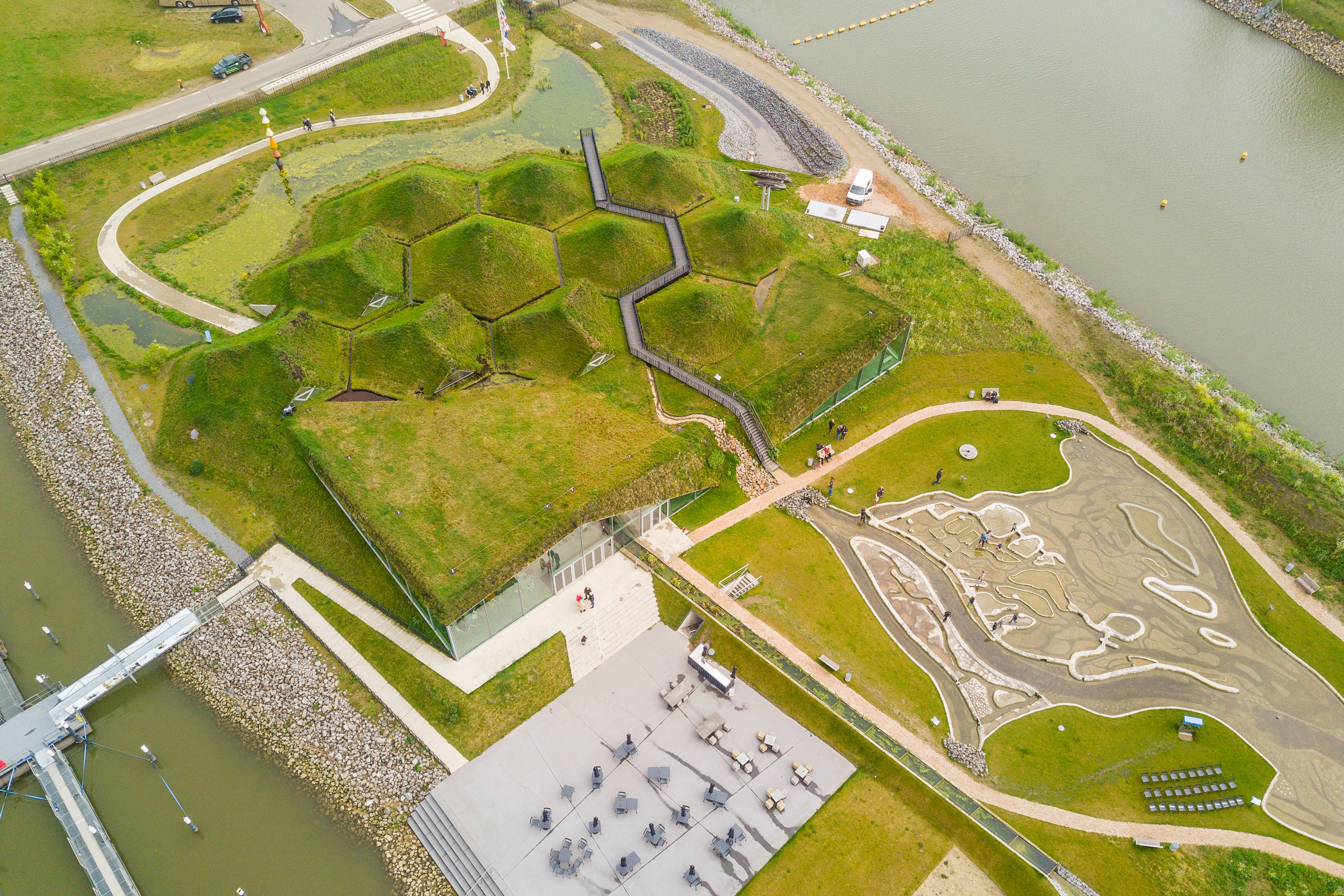As one of the last extensive freshwater tidal wetlands in Northwestern Europe, De Biesbosch National Park is a haven for nature enthusiasts. Created following the St. Elizabeth flood of 1421, this marshland serves as a source of inspiration for many a photographer, birdwatcher, holidaymaker, artist and cultural institution. The Biesbosch MuseumEiland charts the past, the present and the future of the area, and places special emphasis on how man has helped to shape and make use of the area.
The permanent exhibition offers a rich overview of the history of the Biesbosch, the culture and the collection of the museum. The unique story of the Biesbosch is displayed in seven pavilions, covering its history from the Elizabeth Flood of 1421 to its current status as a recreational area. The residents, economy, crafts and nature are displayed in multimedia spaces that stimulate all senses. Original film material and photographs, interviews and tools present a personal and vivid account of the area and its residents.
In the museum you can discover the typical Dutch approach to water, a place where battles against the water have been fought, polders constructed and where man has tamed nature. And a place where flood protection has been achieved by “depolderisation”, to give areas of wetland back to mother nature.
Our Mission: The Biesbosch, the place where living with water (then, now and in the future) is central to activities, presentations and stories.


